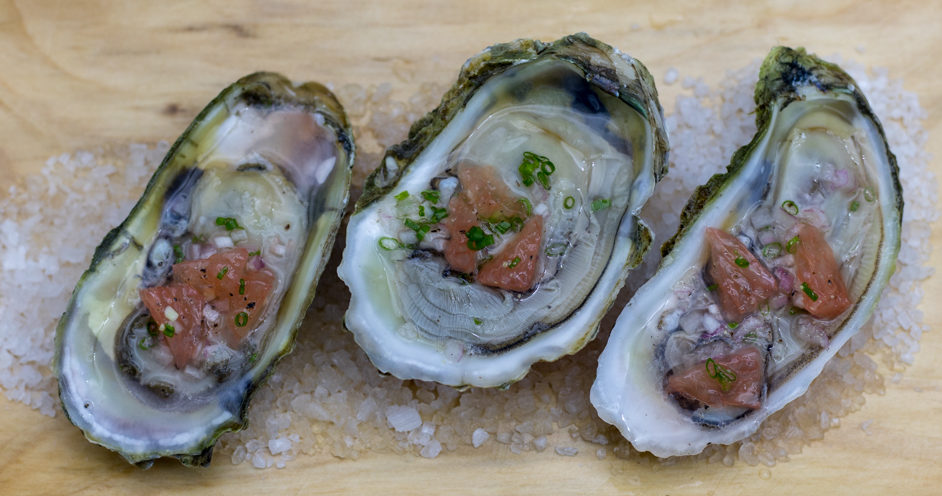Written by Culinary School of Fort Worth Chef-Instructor Maddie Sharp.
Photos by James Creange.
I didn’t like seafood growing up. Let’s face it, growing up in Idaho there wasn’t much “sea” readily available. Boise wasn’t the up and coming progressive city it is today, and if fish or shellfish was available that wasn’t something I was interested in or even a restaurant my family might have typically visited. My dad LOVES seafood, mussels, clams, and every type of fish and oysters. The oysters I know today are very different from the canned, smoked oysters he would put on a chip or cracker on a Sunday afternoon watching the game. Those smelt horrible, and the oil alone could knock out a raccoon. The oysters I know and love today come in a shell and straight from the ocean. They sweet, yet salty, soft fleshed snack that I could easily sit and eat a dozen or two by myself.
Oysters don’t have a very powerful or overbearing flavor, and they pair well with a range of flavors from sweet to spicy to vinegary to fatty. These little jewels can be prepared in a variety of ways sure to suit even the pickiest of palates, as long as you get past the whole “it’s an oyster” thing.
Depending on which coast they are arriving from, the overall shape, look and salinity will all be different. You must clean them. Oysters grow and live in the dirt, and it’s important to clean them thoroughly before shucking them. If you don’t, you can potentially introduce mud into the oyster…which is a true crime and can make yourself or customers extremely ill.
History states that the only months that you should eat oysters are the months that end in “er” while other sources say only months that have an “r” in it. This is because summer months are at the biggest risk for red tides. Red Tides result in a large bloom of algae that grows along the coast and tends to spread toxins that can be absorbed by shellfish. It’s important to stay informed about red tides and make sure that you are buying from a reputable vendor or source.
To capitalize on the fresh citrus before spring is truly upon us, I decided to pair my oysters with a grapefruit mignonette.



Oysters Topped with Homemade Sauce and Grapefruit Mignonette
Ingredients:
1 ea Texas Ruby Red Grapefruit, segment then juice
1 ea finely minced shallot
1 oz red wine vinegar
2 ea finely chopped chives
Pinch of salt
Fresh ground black pepper
Directions:
Whisk all ingredients (except the fresh fruit) together and season with salt and pepper to taste. Top freshly shucked oysters with fresh fruit then finish with approximately 1 tsp of finished sauce per oyster. Enjoy!
